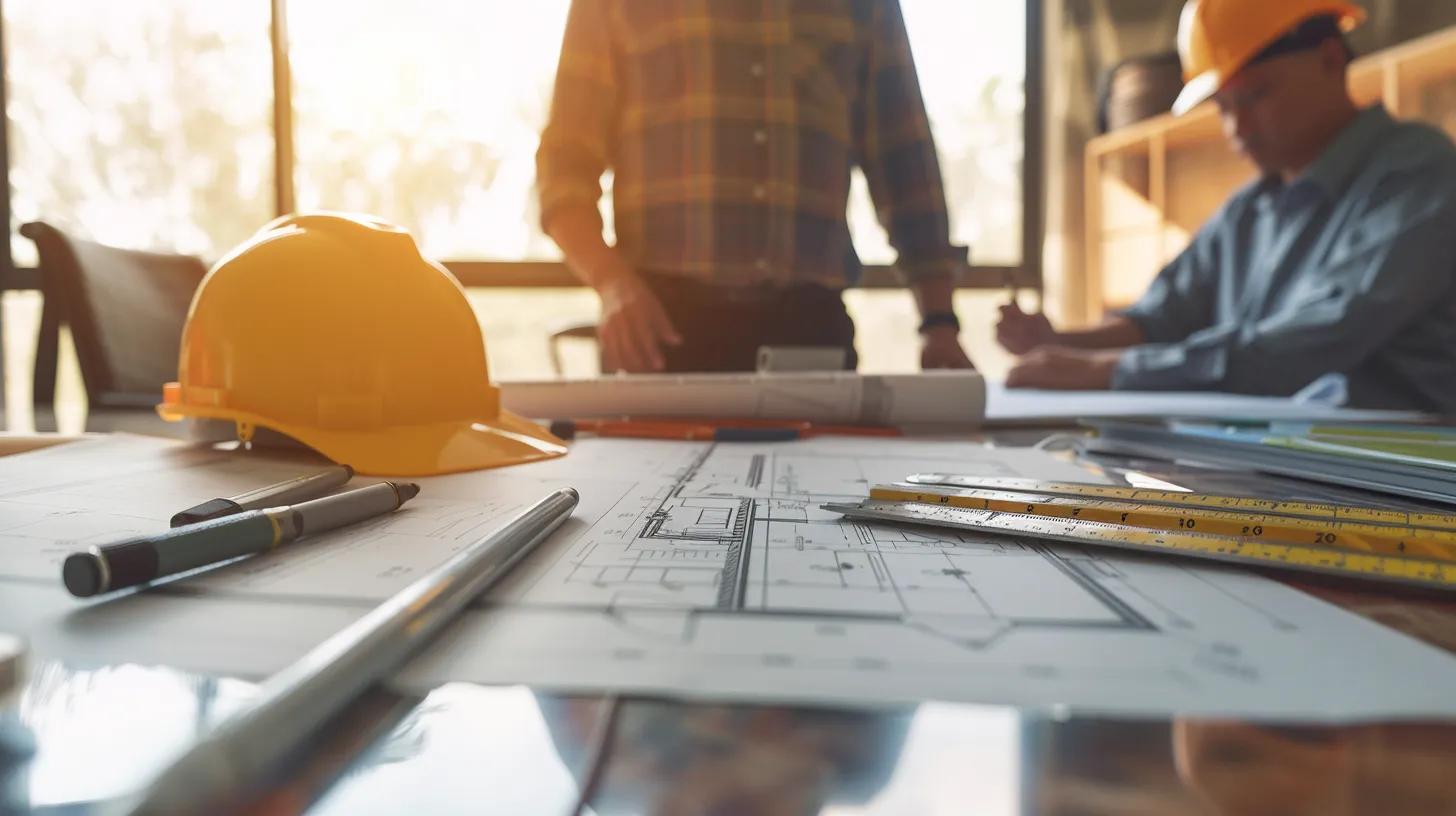
Overcoming Common Construction Hurdles in Home Building
Building a home is a major milestone, but it often comes with unexpected challenges. From budgeting mistakes to permit delays and labor shortages, these obstacles can slow down progress and increase costs. Whether you’re working with a contractor or managing parts of the process yourself, understanding common home construction issues can help you plan ahead and avoid surprises. This guide explores the most frequent problems homeowners face during construction and offers practical tips to keep your project on track.
Key Takeaways
Budgeting errors and material price changes are common and can slow down construction.
Permit delays and documentation issues can push timelines back.
Choosing experienced, licensed contractors helps avoid quality issues and delays.
Material shortages and supply chain problems may raise costs and require substitutions.
Labor shortages can affect quality and cause missed deadlines.
Planning ahead with site testing, contracts, and contingency funds reduces risk.
What Are the Most Common Budgeting Challenges in Home Construction?

Home construction projects frequently struggle with budgeting due to expense underestimation and unexpected environmental changes. Cost miscalculations occur when price fluctuations in materials such as lumber, concrete, or roofing components lead to discrepancies. Additionally, scope creep—where project requirements expand during construction without matching financial adjustments—raises costs further. Other issues include delays in procurement and obtaining competitive bids, which may increase labor costs. These challenges highlight the need for detailed planning, careful fee management, and a flexible contingency fund to cover overruns.
How Do Cost Overruns Affect Home Construction Projects?
Cost overruns delay projects and increase the need for additional funding. Rising prices for key materials, like foundation concrete or specialized countertops, can force homeowners to seek extra financing, often affecting project quality and schedule. Even a modest 10% material price increase in 2023 has pushed budgets beyond expectations, increasing the risk of reduced quality or project scope. Regular budget reviews and re-forecasting are essential for maintaining overall construction efficiency.
What Financing Options Help Manage Construction Budgets?
Effective financing is crucial for managing construction budgets. Homeowners often use construction loans designed to fund the entire project, with built-in provisions for budget adjustments as work progresses. Project management software with financing modules helps track expenses and schedule payments. Refinancing and draw schedules tied to construction milestones can also ease cash flow challenges. Using these financing tools helps align allotted funds with actual expenditures and keeps the building process on track.
How Can Contingency Planning Prevent Budget Shortfalls?
Contingency planning is key to avoiding budget shortfalls. Setting aside a reserve fund—typically 10–15% of the total project cost—provides financial flexibility to handle unexpected delays such as permit issues or sudden material price hikes. Early risk analysis during the planning stages allows project managers to allocate resources efficiently. Regularly reviewing the contingency fund keeps the project moving forward even if unexpected costs arise.
What Permit Issues Commonly Delay Home Construction?

Permit issues are a leading cause of delays in home construction. The permit process, which ensures compliance with local building codes and safety standards, can stall projects if approvals are delayed. Often, insufficient documentation or miscommunications with municipal authorities lead to long waits. In areas with strict zoning and environmental regulations, these delays become even more common. A proactive approach that ensures timely and complete paperwork minimizes downtime and keeps construction schedules aligned with regulatory requirements.
Which Types of Permits Are Required for Building a Home?
Building a home requires several permits to meet local regulations. Common permits include a building permit, electrical permit, plumbing permit, and sometimes a mechanical permit. In some regions, additional permits for environmental impact or zoning adjustments may also be needed, particularly when the project includes demolition or extensive landscape alterations. Each permit focuses on specific safety and quality considerations, ensuring that the home’s foundation, electrical systems, and overall design meet local standards.
How Does the Permit Application Process Impact Project Timelines?
The permit application process can extend project timelines because of complex, varied municipal response times. On average, acquiring a permit may take several weeks during which construction plans must be adjusted. Any required revisions after inspections further delay progress by necessitating additional reviews. To counteract these delays, it is advisable to incorporate buffer periods into project schedules for permit processing and potential resubmissions.
What Are the Common Inspection Challenges During Construction?
Inspections are essential for verifying compliance with building codes and safety standards, but scheduling them can be challenging. High local demand or a shortage of inspectors often leads to delays. Additionally, if inspections reveal issues—such as improper wiring or non-compliant structural elements—rework is necessary, further prolonging the project. Conducting internal quality checks prior to official inspections helps reduce these delays and ensures smoother progress.
How Can Homeowners Choose the Right Contractor to Avoid Problems?

Choosing the right contractor is critical to a successful home construction project. Researching contractor credentials, past project performance, and customer reviews is vital before signing any agreements. A well-established contractor with a transparent pricing structure and verifiable record tends to reduce risks like poor workmanship or delays. Obtaining multiple bids and comparing them based on experience, pricing, and overall project management capabilities can help homeowners select a contractor who fits their project needs and budget.
What Are the Best Practices for Vetting Home Construction Contractors?
Effective contractor vetting involves verifying licenses and insurance and requesting references from previous clients. Homeowners should seek detailed, written bids that outline every cost component and timeline. In-person interviews with prospective contractors can illuminate their project management style and communication skills. These practices enable homeowners to make informed decisions and avoid many common pitfalls that arise from contractor mismanagement.
How Do Contract Terms Affect Construction Outcomes?
Clear contract terms are the foundation of successful construction projects. A detailed contract outlines responsibilities, payment schedules, deadlines, and quality standards. Including clear provisions for handling variations, delays, and disputes helps reduce misunderstandings and costly conflicts. Homeowners should ensure that contracts are legally reviewed to safeguard their investment and provide recourse if commitments are not met.
What Communication Strategies Improve Contractor Relationships?
Effective, regular communication between homeowners and contractors is essential. Holding progress meetings, providing updates via email or project management software, and maintaining open discussions about potential issues help prevent misunderstandings. Assigning a dedicated point of contact to relay information and confirm decisions encourages transparency and allows timely adjustments, ensuring the project stays on track.
What Material Delays and Price Increases Impact Home Construction?

Material delays and price increases are common due to fluctuations in global supply chains. When key materials like lumber, concrete, or roofing become scarce or their prices spike, overall project costs rise, and contractors may have to modify labor plans or design details. Monitoring market trends and working with suppliers who offer price guarantees or stable supply agreements can help mitigate these price fluctuations and delays.
How Do Supply Chain Issues Affect Material Availability?
Supply chain disruptions, triggered by events like natural disasters or economic instability, can delay the delivery of essential materials. When materials such as concrete or specific insulation products are late, the entire project timeline is affected, disrupting labor schedules and increasing costs. Employing buffer stocks and maintaining diversified supplier networks are crucial strategies to avoid significant setbacks.
What Are the Effects of Price Fluctuations on Construction Budgets?
Price fluctuations can quickly strain construction budgets. Unexpected rises in the prices of critical materials force project scopes to be reduced or compromises in quality to be made. Even a small percentage increase in costs for concrete, lumber, or steel can add thousands of dollars in extra expenses. To counter this, including a dynamic pricing analysis and specific contingency funds in the budget is essential.
How Can Material Substitutions Influence Project Quality?
When executed correctly, material substitutions help manage costs while preserving quality. Replacing expensive materials with comparable alternatives can keep the project within budget. However, it is vital that any substitute materials are rigorously reviewed by experts and meet local building codes. Strategic substitutions, when overseen properly, can offer environmentally friendly and cost-effective building solutions.
How Do Labor Shortages and Quality Control Issues Affect Construction?

Labor shortages and quality control challenges impact both the timeline and quality of home construction. A shortage of skilled workers can delay projects and lead to rushed or subpar work. This may force contractors to use less experienced labor, increasing the risk of mistakes that require costly rework. Regular site inspections and independent audits help ensure that construction standards remain high despite these challenges.
What Causes Labor Shortages in Home Building Projects?
Labor shortages arise from factors such as an aging workforce and a limited influx of new skilled workers. Economic booms often increase demand for residential construction, intensifying competition for qualified labor. Although training programs and apprenticeships are emerging to fill the gap, immediate shortages still lead to schedule delays and efficiency issues.
How Does Labor Skill Level Impact Construction Quality?
The skill level of workers is crucial to the quality of construction. Experienced labor ensures superior workmanship and efficient problem-solving, whereas less skilled workers may cause defects or require rework. For this reason, homeowners and contractors must prioritize hiring well-trained workers and investing in relevant training programs.
What Quality Control Measures Can Homeowners Expect?
Robust quality control includes regular site inspections, adherence to local building codes, and third-party audits. Homeowners should expect detailed checklists and documentation at each build stage. Clear communication of quality expectations and contractual obligations further helps in quickly identifying and resolving any issues that may arise.
What Unexpected Site Conditions Commonly Disrupt Home Construction?

Unexpected site conditions, such as unforeseen soil issues or hidden water tables, can cause significant delays and extra costs. These issues might only be detected after excavation has begun, necessitating extensive rework or additional engineering measures. Comprehensive site testing and risk assessments before breaking ground are vital for identifying potential problems early and minimizing their impact on the project.
How Do Soil Problems Affect Building Foundations?
Soil issues like poor compaction or high moisture levels directly affect foundation stability. When soil conditions are suboptimal, additional engineering—such as deep pilings or reinforced footings—is required, which increases both cost and timeline. Conducting a proper soil test early on helps in planning a robust foundation that ensures long-term safety.
What Drainage Issues Can Delay Construction?
Poor drainage can lead to water accumulation around the building site, compromising foundation integrity and causing moisture-related defects. Problems such as blocked drainage systems or inadequate grading require immediate remedial work and extra landscaping efforts. Investing in effective site drainage planning and regular maintenance checks is essential to keep construction on schedule.
How Can Site Testing Prevent Construction Surprises?
Thorough site testing before construction begins provides valuable insights into soil composition, groundwater levels, and other environmental factors. This testing allows builders to adjust foundation designs and drainage strategies accordingly, reducing the risk of unforeseen delays. Advanced diagnostic measures support timely adjustments in building plans and more accurate budgeting.
How Do Legal and Regulatory Challenges Impact Home Construction?

Legal and regulatory challenges affect many aspects of home construction, from design approval to final inspections. Meeting local building codes, zoning laws, and environmental regulations requires careful documentation and strict adherence to standards. Variation in regulations may necessitate additional features not originally planned, increasing both cost and timeline. Ensuring full compliance protects the project's long-term viability.
What Are the Key Building Code Compliance Requirements?
Building codes set standards for structural integrity, fire safety, electrical systems, plumbing, and energy efficiency. Adhering to these codes through regular inspections is essential for obtaining occupancy permits and ensuring the home’s safety and value. Close collaboration with architects and experienced contractors is vital to meet all requirements.
How Do Insurance and Liability Issues Affect Homeowners?
Insurance and liability play a critical role in managing risks during construction. Policies can cover defects, accidents, and delays; however, inadequate coverage or unclear liability clauses can lead to legal disputes and extra costs. Homeowners must carefully review contracts and insurance details to ensure all risks are clearly managed.
What Are Common Contract Disputes and How Are They Resolved?
Contract disputes often arise over scope changes, payment delays, or workmanship issues. Clear, detailed contracts that outline timelines, costs, and quality standards are essential to prevent these disputes. When conflicts do occur, negotiation, mediation, or legal arbitration may be necessary to reach a resolution without stalling the project.
Conclusion
Home construction involves many moving parts, and even well-planned projects can run into trouble. Budget overruns, material delays, legal hurdles, and labor shortages are just a few of the issues that can disrupt timelines and raise costs. However, most of these challenges can be managed with careful planning, regular communication, and a strong team. By understanding the common risks and how to respond to them, homeowners can make informed decisions and build their dream home with more confidence and fewer setbacks.
Frequently Asked Questions
What is the biggest budgeting challenge in home construction?
The most common issue is cost overruns, often caused by rising material prices and changes to the project scope during construction.
How can unexpected site conditions be managed?
Site testing and risk assessments done early in the planning stage can help uncover issues like poor soil or drainage before construction begins.
Why is contractor selection important for home builds?
Choosing the right contractor helps ensure good workmanship, clear communication, and fewer delays or disputes throughout the project.
How do permit delays impact construction schedules?
Permit delays can stop progress for weeks or even months. Including time buffers in your schedule helps reduce the impact of these setbacks.
What strategies can help with insurance and liability concerns?
Homeowners should carefully review contracts, verify insurance coverage, and define who is responsible for what to avoid legal issues.


